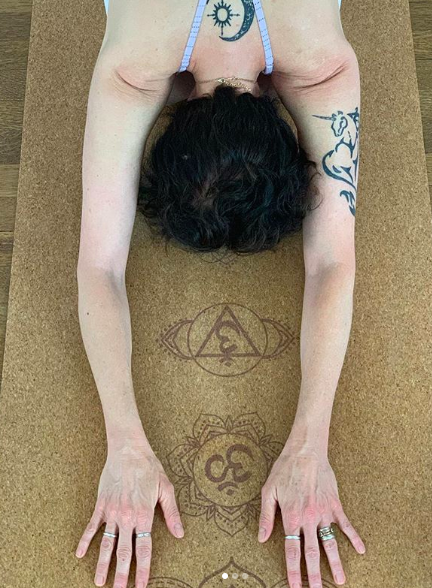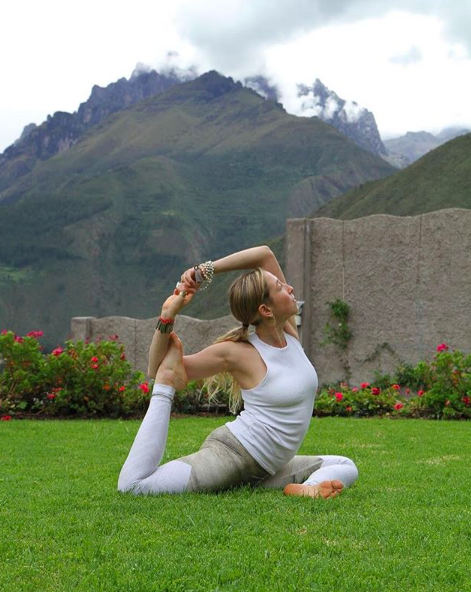Physiology of Trauma – A Yin Yoga Perspective Part 1: The Anatomy of Survival
By: Kali Basman
layers of the brain
Our brain’s most important job is to ensure our survival in a three-pronged process:
1) by detecting what our body needs- food, shelter, sex, etc;
2) how to get us to where we can meet those needs;
3) by warning us of dangers or opportunities along the way
In understanding how to move through trauma we must understand the different layers of the brain and how traumatic experience influences each layer. You can think of each layer as building one on top of the next from lower to upper.
The lower brain is the most primitive part of the brain: the ancient reptilian brain located in the brain stem just above where spinal cord enters skull. It’s already “online” when we are born, so it’s responsible for all the things a newborn baby can do: eat, sleep, wake, cry, breathe, feel hunger or pain, and rid the body of toxins through excretion.
The middle brain known as our limbic or emotional system is our mammalian brain. All animals that live in groups and nurture their young possess one. It’s the seat of our emotions and helps us to monitor danger, cope with complex social challenges, and express ourselves behaviorally.
The top layer, the upper brain, is our neocortex. While other mammals have this, it’s much thicker in humans. Alongside monitoring precise muscle control, it allows abstract abilities like the understanding of symbols and ideas and imagining and envisioning a future.
impact of trauma
The Amygdala and the Insula are two components of the brain which are most directly impacted by trauma.
The amygdala is our system’s smoke detector; it identifies whether an incoming stimulus is a threat or not. If it a threat, it sends an instant message down the brain stem to recruit the nervous system in an orchestration of a whole body stress response. Hormones like cortisol and adrenaline are released, heart rate and blood pressure increases as we prepare for fight or flight.
Once the amygdala perceives the danger has passed, the body can return to a normal state of rest. HOWEVER, if there is no closure on the threat (as much trauma suggests), the body remains triggered. The somatic memory of the body becomes imprinted in a stress response.
The insula is the part of the brain that integrates and interprets input from internal organs, muscles, joints, and proprioceptive system to generate the sense of being embodied. Residing in between the temporal and frontal lobes, the insula is our link to the powerful gut feelings we have that says, “I don’t feel safe”. These are powerful feelings generated deep in the being and cannot be eliminated by reason or logic.
The insula is constantly scanning the physiological state of the entire body. However, if a body is subject to overwhelming amounts of trauma, the insula learns to shut down – as it is unable to process it all, it tires of the consistent strain on the system, it stops measuring the system and slows to a dull hum, rendering the individual disconnected from physical sensations as warnings or feeling tones, and unable to identify sensations of the Self.
As such, consistent or overwhelming trauma can result in an eradicated function of the brain’s survival instinct. If you don’t know how you feel, how can you take care of the self? In order to remedy this, you need visceral connections with the feeling body which unites the fragmented aspects of the self and encourages a connectivity to the impermanence of sensation, the rhythm of the breath, and your own body’s movement.
Can you think of a practice which engenders these? To be continued…
Want to practice with Kali and learn more about the anatomy of survival?
Learn more with her upcoming 5 Elements Yin & Restorative Intensive in Sedona, Arizona September 13-19 and Advanced Principles in Yin, Yang & Mind Intensive Level II September 26-October 3, 2019.
About Kali:
International yoga teacher Kali Basman enriches the paradigm of Yin Yoga to integrate distinct aspects of Self into an innate wisdom practice to awaken a rich inner life and radiate with ritual. Her offering honors Yin Yoga as a tool to surrender to our intrinsic wholeness.
On the textured path of mindful healing, Kali is celebrated for her integration of the 5 Elements and Chinese Meridian Theory with self-inquiry, embodied Anatomy, Buddhist Philosophy of Equanimity, and sharp intellect.






